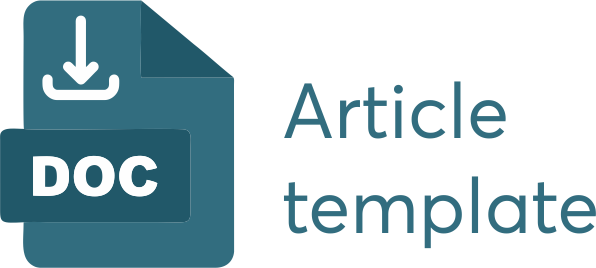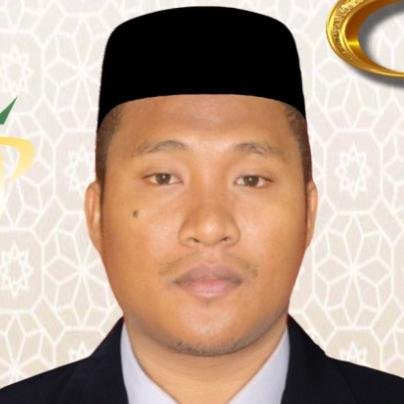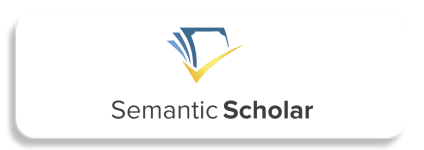The relationship between self-efficacy and students' mathematical literacy
DOI:
https://doi.org/10.62568/jomes.v1i1.12Keywords:
Mathematical Literacy, Self-efficacy, Math ProblemsAbstract
This research aims to determine the relationship between the dimensions of self-efficacy and students' mathematical literacy. The participants in this research were 103 grade 11 students at SMA N 1 Gandapura Bireuen. This research is in the form of an expository with a quantitative approach. Data was collected through self-efficacy questionnaires and mathematical literacy questions. Analysis of this research data used SEM PLS assisted by the Smart-PLS. The research results show that the dimensions of generality and strength significantly correlate with athematic literacy and are in a strong category. The magnitude dimension is significantly related to mathematic literacy but is in the medium category. Such conditions indicate the need to increase attention to the magnitude dimension by aspiring to authentic learning.
References
Ahn, H. S., Usher, E. L., Butz, A., & Bong, M. (2016). Cultural differences in the understanding of modelling and feedback as sources of self‐efficacy information. British Journal of Educational Psychology, 86(1), 112–136. https://doi.org/10.1111/bjep.12093
Akkaya, S., & Polat, K. (2022). An investigation of the relationship between the parents’ math literacy self-efficacy and their math anxieties. Educational Policy Analysis and Strategic Research, 17(2), 246–265. https://eric.ed.gov/?id=EJ1352295
Aksu, G., & Güzeller, C. (2016). Classification of PISA 2012 mathematical literacy scores using decision-tree method: Turkey sampling. EGITIM VE BILIM-EDUCATION AND SCIENCE, 41(185). https://doi.org/10.15390/eb.2016.4766
Badrun, B., Bahtiar, B., & Maimun, M. (2022). The effect of self-efficacy on teachers’ organizational citizenship behavior: A case of MTsN 1 Mataram city. Jurnal Pendidikan Progresif, 12(3), 1356–1371.https://garuda.kemdikbud.go.id/documents/detail/2926299
Bandura, A. (1999). Self-efficacy: The exercise of control(Vol.13).https://connect.springerpub.com/content/sgrjcp/13/2/158
Börner, K., Bueckle, A., & Ginda, M. (2019). Data visualization literacy: Definitions, conceptual frameworks, exercises, and assessments. Proceedings of the National Academy of Sciences, 116(6),1857–1864. https://doi.org/10.1073/pnas.1807180116
Boyd, P., & Ash, A. (2018). Mastery mathematics: Changing teacher beliefs around in-class grouping and mindset. Teaching and Teacher Education, 75, 214–223. https://www.sciencedirect.com/science/article/pii/S0742051X1731274X
Bradley, R. L., Browne, B. L., & Kelley, H. M. (2017). Examining the influence of self-efficacy and self-regulation in online learning. College Student Journal, 51(4), 518–530. https://www.ingentaconnect.com/content/prin/csj/2017/00000051/00000004/art00008
Busnawir, B., Misu, L., Sudia, M., Idris, M., & Sadikin, S. (2021). Analysis of mathematical literacy ability in terms of self-efficacy high and low. International Journal of New Trends in Arts, Sports & Science Education (IJTASE), 10(5), Article 5. http://ijtase.net/index.php/ijtase/article/view/41
Charleston, L., & Leon, R. (2016). Constructing self-efficacy in STEM graduate education. Journal for Multicultural Education, 10(2), 152–166. https://www.emerald.com/insight/content/doi/10.1108/JME-12-2015-0048/full/html
Collins, A., Brown, J. S., & Newman, S. E. (2018). Cognitive apprenticeship: Teaching the crafts of reading, writing, and mathematics. In Knowing, learning, and instruction (pp. 453–494). Routledge. https://www.taylorfrancis.com/chapters/edit/10.4324/9781315044408-14/cognitive-apprenticeship-teaching-crafts-reading-writing-mathematics-allan-collins-john-seely-brown-susan-newman
Daher, W., Gierdien, F., & Anabousy, A. (2021). Self-efficacy in creativity and curiosity as predicting creative emotions. https://scholar.sun.ac.za/handle/10019.1/109648
Dixon, H., Hawe, E., & Hamilton, R. (2020). The case for using exemplars to develop academic self-efficacy. Assessment & Evaluation in Higher Education, 45(3), 460–471. https://doi.org/10.1080/02602938.2019.1666084
Faradilla, N., Putra, Z. H., & Noviana, E. (2022). The Relationship between self-Efficiency and mathematical knowledge of 3-D shapes of fifth grade of elementary School. JOURNAL OF TEACHING AND LEARNING IN ELEMENTARY EDUCATION (JTLEE), 5(1), 34–47. https://jtlee.ejournal.unri.ac.id/index.php/JTLEE/article/view/7906
Filippou, K. (2019). Students’ academic self-efficacy in international Master’s degree programs in finnish Universities. International Journal of Teaching and Learning in Higher Education, 31(1), 86–95. https://eric.ed.gov/?id=EJ1206968
Firdaus, F. M., & Herman, T. (2017). Improving primary students’ mathematical literacy through problem based learning and direct instruction. Educational Research and Reviews, 12(4), 212–219. https://eric.ed.gov/?id=EJ1132197
Fitzallen, N. (2015). STEM education: What does mathematics have to offer?. Mathematics Education Research Group of Australasia. https://eric.ed.gov/?id=ED572451
Gabriel, F., Signolet, J., & Westwell, M. (2018). A machine learning approach to investigating the effects of mathematics dispositions on mathematical literacy. International Journal of Research & Method in Education, 41(3), 306–327. https://doi.org/10.1080/1743727X.2017.1301916
Geiger, V., Goos, M., & Forgasz, H. (2015). A rich interpretation of numeracy for the 21st century: A survey of the state of the field. ZDM, 47(4), 531–548. https://doi.org/10.1007/s11858-015-0708-1
Genc, M., & Erbas, A. K. (2019). Secondary mathematics teachers’ conceptions of mathematical literacy. International Journal of Education in Mathematics, Science and Technology, 7(3),222–237. https://ijemst.org/index.php/ijemst/article/view/611
Gerde, H. K., Pierce, S. J., Lee, K., & Van Egeren, L. A. (2018). Early Childhood Educators’ self-efficacy in science, math, and literacy instruction and science practice in the classroom. Early Education and Development, 29(1), 70–90. https://doi.org/10.1080/10409289.2017.1360127
Gravemeijer, K., Stephan, M., Julie, C., Lin, F.-L., & Ohtani, M. (2017). What Mathematics education may prepare students for the society of the future? International Journal of Science and Mathematics Education, 15(S1), 105–123. https://doi.org/10.1007/s10763-017-9814-6
Gurria, A. (2016). PISA 2015 results in focus. PISA in Focus,67,1. https://search.proquest.com/openview/e8c066902afa5f1a32b207d74370b87f/1?pq-origsite=gscholar&cbl=2026456
Hasibuan, A. M., Saragih, S., & Amry, Z. (2019). Development of Learning Materials Based on Realistic Mathematics education to improve problem solving ability and student learning independence. International Electronic Journal of Mathematics Education, 14(1), 243–252. https://eric.ed.gov/?id=EJ1227202
Hermawan, L. I., Lestari, N. D. S., & Rahmawati, A. F. (2019). Supporting students’ reasoning and argumentation skills through mathematical literacy problem on relation and function topic. IOP Conference Series: Earth and Environmental Science, 243(1), 012106. https://iopscience.iop.org/article/10.1088/1755-1315/243/1/012106/meta
Hiller, S. E., Kitsantas, A., Cheema, J. E., & Poulou, M. (2022). Mathematics anxiety and self-efficacy as predictors of mathematics literacy. International Journal of Mathematical Education in Science and Technology, 53(8), 2133–2151. https://doi.org/10.1080/0020739X.2020.1868589
Hirsh-Pasek, K., Zosh, J. M., Golinkoff, R. M., Gray, J. H., Robb, M. B., & Kaufman, J. (2015). Putting education in “educational” apps: lessons from the science of learning. Psychological Science in the Public Interest, 16(1), 3–34. https://doi.org/10.1177/1529100615569721
Kastberg, D., Chan, J. Y., & Murray, G. (2016). Performance of US 15-year-old students in science, reading, and mathematics literacy in an international context: First look at PISA 2015. NCES 2017-048. National Center for Education Statistics. https://eric.ed.gov/?id=ED570968
Kim, Y. H., & Choi, N. (2019). Career decision self‐efficacy of Asian American students: The Role of Curiosity and Ethnic Identity. The Career Development Quarterly, 67(1), 32–46. https://doi.org/10.1002/cdq.12161
Kurniawati, N. D. L., & Mahmudi, A. (2019). Analysis of mathematical literacy skills and mathematics self-efficacy of junior high school students. Journal of Physics: Conference Series, 1320(1), 012053. https://iopscience.iop.org/article/10.1088/1742-6596/1320/1/012053/meta
Laurens, T., Batlolona, F. A., Batlolona, J. R., & Leasa, M. (2017). How does realistic mathematics education (RME) improve students’ mathematics cognitive achievement? Eurasia Journal of Mathematics, Science and Technology Education, 14(2),569–578. https://www.ejmste.com/article/how-does-realistic-mathematics-education-rme-improve-students-mathematics-cognitive-achievement-5284
Letwinsky, K. M. (2017). Examining the relationship between secondary mathematics teachers’ self-efficacy, attitudes, and use of technology to support communication and mathematics literacy. International Journal of Research in Education and Science, 3(1), 56–66. https://eric.ed.gov/?id=EJ1126703
Liu, Q., Liu, J., Cai, J., & Zhang, Z. (2020). The relationship between domain- and task-specific self-efficacy and mathematical problem posing: A large-scale study of eighth-grade students in China. Educational Studies in Mathematics, 105(3), 407–431. https://doi.org/10.1007/s10649-020-09977-w
Maksum, A., Safitri, D., Ibrahim, N., Marini, A., & Wahyudi, A. (2019). Self-efficacy model for elementary school students: Case in Indonesia. Opcion, 35(88), 851–865. http://sipeg.unj.ac.id/repository/upload/jurnal/artikel_Self-Efficacy_Model_for_Elementary_School_Students__Case_in_Indonesia(1).pdf
Margot, K. C., & Kettler, T. (2019). Teachers’ perception of STEM integration and education: A systematic literature review. International Journal of STEM Education, 6(1), 2. https://doi.org/10.1186/s40594-018-0151-2
Marsitin, R., & Sesanti, N. R. (2023). Developing an electronic module based on mathematical literacy to enhance students’ mathematical reasoning. Jurnal Elemen, 9(1), 197–210. https://scholar.archive.org/work/6fsajybsqvb73ma4nd7yudfocm/access/wayback/http://e-journal.hamzanwadi.ac.id/index.php/jel/article/download/6915/pdf
Martin, D. B. (2018). Mathematics learning and participation as racialized forms of experience: African American parents speak on the struggle for mathematics literacy. In Urban Parents Perspectives Children’S Math. Mtl V8# 3 (pp. 197–229). Routledge. https://www.taylorfrancis.com/chapters/edit/10.4324/9780203764152-2/mathematics-learning-participation-racialized-forms-experience-african-american-parents-speak-struggle-mathematics-literacy-danny-bernard-martin
Masitoh, L. F., & Fitriyani, H. (2018). Improving students’ mathematics self-efficacy through problem based learning. Malikussaleh Journal of Mathematics Learning (MJML), 1(1), 26–30. https://ojs.unimal.ac.id/mjml/article/view/679
Miller, A. D., Ramirez, E. M., & Murdock, T. B. (2017). The influence of teachers’ self-efficacy on perceptions: Perceived teacher competence and respect and student effort and achievement. Teaching and Teacher Education, 64, 260–269. https://www.sciencedirect.com/science/article/pii/S0742051X16302335
Mukhibin, A., & Himmah, W. I. (2020). An Analysis of mathematical self-efficacy of the 10th grade MIPA students of MAN Salatiga. Indonesian Journal of Mathematics Education, 3(1), 8–14. https://scholar.archive.org/work/yntoqqexebbdzkgayn7jox3cca/access/wayback/https://jurnal.untidar.ac.id/index.php/ijome/article/download/2242/1319
Nurlu, Ö. (2015). Investigation of teachers’ mathematics teaching self-efficacy. International Electronic Journal of Elementary Education, 8(1), 21–40. https://www.iejee.com/index.php/IEJEE/article/view/95
OECD. (2015). PISA 2015 Assessment and analytical framework: science, reading, mathematic, financial literacy and collaborative problem solving|en|OECD. https://www.oecd.org/education/pisa-2015-assessment-and-analytical-framework-9789264281820-en.htm
OECD. (2018). PISA 2018 Assessment and analytical framework|en|OECD. https://www.oecd.org/education/pisa-2018-assessment-and-analytical-framework-b25efab8-en.htm
Ozkal, N. (2019). Relationships between self-efficacy beliefs, engagement and academic performance in math lessons. Cypriot Journal of Educational Sciences, 14(2), 190–200. https://eric.ed.gov/?id=EJ1222103
Perera, H., & Priyanath, H. M. S. (2022). Effect of self-efficacy on self-employment intention of undergraduates: A case of arts undergraduates in Sabaragamuwa University of Sri Lanka. Journal of Social Review and Development, 1(2), 05–13. https://shorturl.at/mpuw7
Psycharis, S., & Kallia, M. (2017). The effects of computer programming on high school students’ reasoning skills and mathematical self-efficacy and problem solving. Instructional Science, 45(5), 583–602. https://doi.org/10.1007/s11251-017-9421-5
Putri, W., & Prabawanto, S. (2019). The analysis of students’ self-efficacy in learning mathematics. Journal of Physics: Conference Series, 1157(3), 032113. https://iopscience.iop.org/article/10.1088/1742-6596/1157/3/032113/meta
Rizki, L. M., & Priatna, N. (2019). Mathematical literacy as the 21st century skill. Journal of Physics: Conference Series, 1157(4), 042088. https://iopscience.iop.org/article/10.1088/1742-6596/1157/4/042088/meta
Roick, J., & Ringeisen, T. (2018). Students’ math performance in higher education: Examining the role of self-regulated learning and self-efficacy. Learning and Individual Differences, 65, 148–158. https://www.sciencedirect.com/science/article/pii/S1041608018300979
Rosa, M., & Orey, D. C. (2015). A trivium curriculum for mathematics based on literacy, matheracy, and technoracy: An ethnomathematics perspective. ZDM, 47(4), 587–598. https://doi.org/10.1007/s11858-015-0688-1
Samuel, T. S., & Warner, J. (2021). “I Can Math!”: Reducing math anxiety and increasing math self-efficacy using a mindfulness and growth mindset-based intervention in first-year students. Community College Journal of Research and Practice, 45(3), 205–222. https://doi.org/10.1080/10668926.2019.1666063
Schunk, D. H., & DiBenedetto, M. K. (2016). Self-efficacy theory in education. Handbook of Motivation at School, 2, 34–54. https://books.google.com/books?hl=en&lr=&id=MmyaCwAAQBAJ&oi=fnd&pg=PA34&dq=Selfefficacy+theory+in+education.+Handbook+of+Motivation+at+School&ots=Z8dMq1omnX&sig=DtXFC9PexgJPhpzNJeQPOya4YGE
Sha, L., Schunn, C., Bathgate, M., & Ben-Eliyahu, A. (2016). Families support their children’s success in science learning by influencing interest and self-efficacy: FROM FAMILY SUPPORT TO CHOICES AND ENGAGEMENT. Journal of Research in Science Teaching, 53(3), 450–472. https://doi.org/10.1002/tea.21251
Siboro, E. S., Agung, A. S. S. N., & Quinones, C. A. (2022). Exploring the level of students’self-efficacy in speaking class. LLT Journal: A Journal on Language and Language Teaching, 25(2), 651–659.https://e-journal.usd.ac.id/index.php/LLT/article/view/4432
Simamora, R. E., & Saragih, S. (2019). Improving Students’ mathematical problem solving ability and self-efficacy through guided discovery learning in local culture context. International Electronic Journal of Mathematics Education, 14(1), 61–72. https://eric.ed.gov/?id=EJ1227360
Speer, N. M., King, K. D., & Howell, H. (2015). Definitions of mathematical knowledge for teaching: Using these constructs in research on secondary and college mathematics teachers. Journal of Mathematics Teacher Education, 18(2), 105–122. https://doi.org/10.1007/s10857-014-9277-4
Stacey, K. (2015). The international assessment of mathematical literacy: PISA 2012 Framework and items. In S. J. Cho (Ed.), Selected Regular Lectures from the 12th International Congress on Mathematical Education (pp. 771–790). Springer International Publishing. https://doi.org/10.1007/978-3-319-17187-6_43
Stacey, K., & Turner, R. (2014). Assessing mathematical literacy. Springer. https://link.springer.com/content/pdf/10.1007/978-3-319-10121-7.pdf
Street, K. E. S., Malmberg, L.-E., & Stylianides, G. J. (2017). Level, strength, and facet-specific self-efficacy in mathematics test performance. ZDM, 49(3), 379–395. https://doi.org/10.1007/s11858-017-0833-0
Sumirattana, S., Makanong, A., & Thipkong, S. (2017). Using realistic mathematics education and the DAPIC problem-solving process to enhance secondary school students’ mathematical literacy. Kasetsart Journal of Social Sciences, 38(3), 307–315. https://www.sciencedirect.com/science/article/pii/S2452315117303685
Waluya, S. B., & Asikin, M. (2021). Analysis mathematical representation ability by self-efficacy of prospective mathematics teachers. Journal of Physics: Conference Series, 1918(4), 042118. https://iopscience.iop.org/article/10.1088/1742-6596/1918/4/042118/meta
Zay, D. A., & Kurniasih, M. D. (2023). Exploring math anxiety towards the students’ computer self-efficacy in learning mathematics. Mosharafa: Jurnal Pendidikan Matematika, 12(1), 113–124. https://scholar.archive.org/work/rf6xno7h45ewfleyxerhj766ku/access/wayback/https://journal.institutpendidikan.ac.id/index.php/mosharafa/article/download/mv12n1_11/1454
Zhou, M. (2016). A Revisit of general self-efficacy scale: uni- or multi-dimensional? Current Psychology, 35(3), 427–436. https://doi.org/10.1007/s12144-015-9311-4
Downloads
Submitted
Accepted
Published
How to Cite
Issue
Section
License
Copyright (c) 2023 Husna Fatwana, Dadan Dasari, Dadang Juandi, Sahar Abdo Mohamed Elsayed, Budi Azhari

This work is licensed under a Creative Commons Attribution 4.0 International License.




















